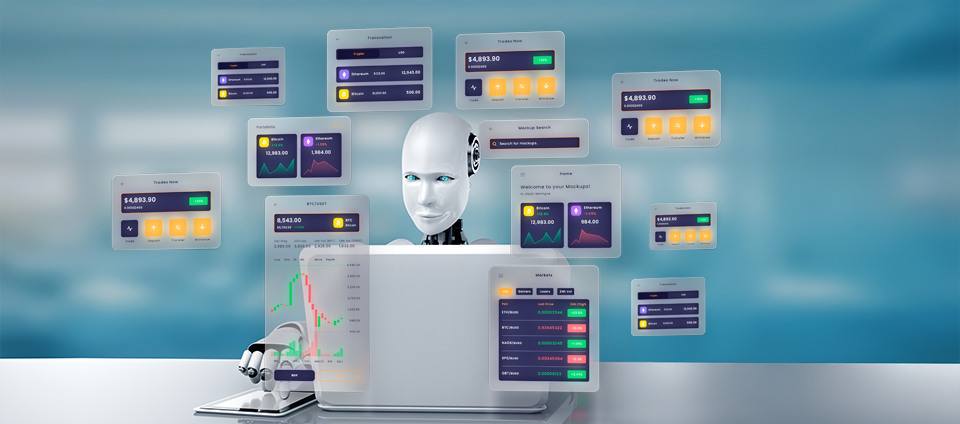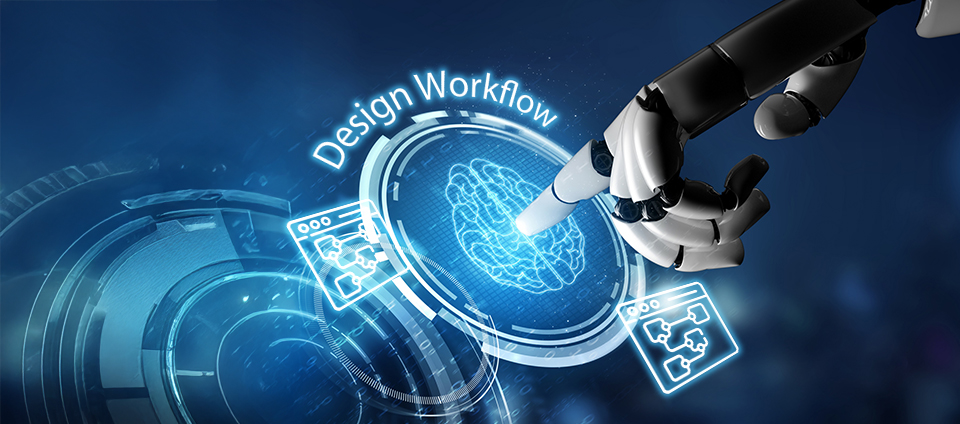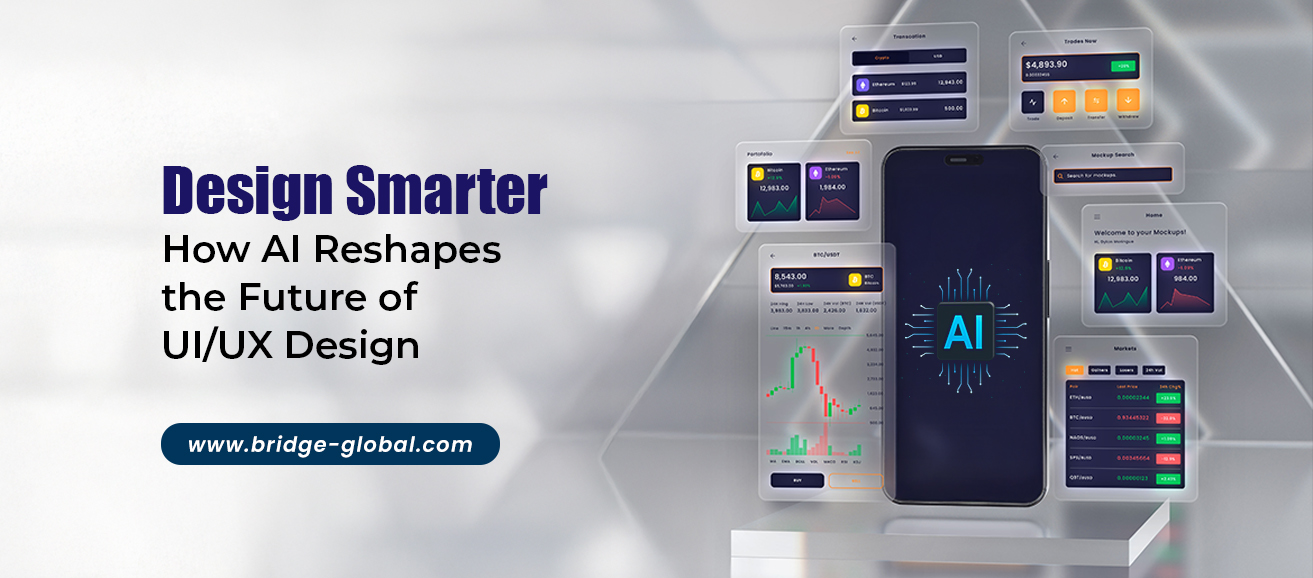Designing Tomorrow: The Future of UI/UX with AI
AI in UI/UX design is no longer a futuristic concept, but it’s a present reality reshaping how digital experiences are created. From initial concept to final testing, artificial intelligence is transforming the entire design process. With the support of an experienced AI development company, businesses can seamlessly integrate AI tools into their UI/UX workflows, enabling faster, smarter, and more user-focused results across the digital ecosystem.
How AI Is Reshaping UI/UX Design

1. Faster Design Process
One of the most noticeable benefits of AI in design is speed. With AI design tools like Uizard and Stitch, we can now generate UI/UX designs from wireframes or text prompts in seconds. Tasks like image optimization, content resizing, and even writing simple code can be automated. This allows us to move faster from concept to prototype, making room for more creativity and experimentation.
2. Smarter Design Choices
AI also brings data-driven intelligence into the design process. By analyzing user behavior and patterns, AI tools suggest UX changes that improve usability and engagement. These insights help us make better design decisions without relying solely on intuition.
3. Personalized Experiences
AI uses user data (like behavior and preferences) to create more personalized interfaces and content. This improves relevance and user satisfaction.
4. More Accessible Designs
AI improves accessibility by generating alt text, translating content, and adapting layouts for different users. This helps ensure our designs are usable by a broader and more diverse audience.
5. Creative Development
Generative tools like MidJourney for illustrations and Khroma for color palettes offer new creative inspiration. Platforms like Anima and Locofy convert designs into responsive front-end code, helping us bridge the gap between UI/UX design and custom software development.
What AI Adds to the Design Workflow

1. User Research Made Easy
AI quickly analyzes qualitative and quantitative data from interviews, surveys, feedback, and behavior logs. It identifies trends, pain points, and builds user personas with greater accuracy and less manual effort.
2. Faster Ideas & Prototypes
AI can suggest layout structures, visual themes, and color combinations. It can even transform sketches or text into functional, ready-to-use prototypes within seconds, streamlining the ideation phase.
3. Smarter Design Testing
AI tools can simulate user interactions, predict attention focus areas, check design consistency, and provide instant feedback. This boosts testing efficiency and catches issues early in the process.
4. Content Creation Support
From generating UI text and placeholder content to creating simple illustrations or images, AI speeds up content production. It also helps maintain design consistency while freeing designers to focus on problem-solving.
Challenges
Despite these advantages, AI has its limits. It may not fully grasp emotional nuance, and over-reliance can weaken the human touch in design. Ethical use, bias mitigation, and thoughtful integration are crucial. AI should assist designers, not replace them.
Final Thoughts
The future of UI/UX lies in embracing AI as a creative and analytical partner. By learning how to use AI tools effectively, we can design experiences that are faster, smarter, more inclusive, and more impactful. The key is to balance innovation with empathy and stay open to what’s next.
Over the past decade, I’ve seen design trends come and go, but the shift AI brings is different. It’s not about replacing our instincts as designers; it’s about amplifying them. When paired with experience and a user-first mindset, AI can help us craft digital experiences that are faster, smarter, and more meaningful.
The key is to balance innovation with empathy, and stay open to what’s next.
With the right UI/UX development partner, your company can leverage futuristic tools to craft cutting-edge designs that elevate your product.



